|
I couldn't breathe. I wanted the 60-something gray haired men sitting across from me in the waiting room to shut up. I wanted the women with them to stop shaking their heads. I wanted the one woman who spoke to get her head out of the sand, stop agreeing, and to speak to what I knew she knows. "She should've said something then," one of the men said. "If she were my daughter, she'd have spoken up about that then, if it really happened. That's just teenage behavior." At that point, I wanted to get out of my seat, throw furniture at him, and bash his head in the wall behind him. I wanted to show him what it feels like to hold in a secret for decades because of people like him and their opinions on what young people should do when sexually assaulted. Their opinion of what should be tolerated, thought as normal. and what is "just asking for it." I wanted him to know what it felt like to not express and be ashamed of your sexuality for the whole of your life memory because of people like him. I was in the cardiologist waiting room. It was the day that the brave Christine Blassey Ford testified in front of congress about the experience she had with then Supreme Court nominee Brett Kavanaugh. Fortunately, my name was called and my panic attack was caught on EKG and the whole thing helped my doctor get me on the right medication for my heart condition. Things have a way of working out. I had a nervous breakdown that day, holding in my emotion, and it took me a few months to recover.
This is what I wear when I practice because I don't keep my house super cool in the summer. I sweat when I practice. I worried about people wondering about my intentions with posting because of the way my clothes fit. I wanted to share my practice because I am immensely grateful for it. I'm grateful for my body supporting my practice even with my health struggles. I feel like sharing my practice could encourage others to begin or keep going with their movement practice because I too am inspired by others that way. I don't think twice about what people are wearing or not wearing when I scroll and see yoga practices shared on social media. I am amazed by the human body and the way it works. I see it a beautiful creation in its variety of form and expression. It is art to me. I was a bit disturbed that I paused and worried before sharing my pictures.
Sexual repression is not the only possible or base cause for sexual violence, misogyny, or the objectification of women. We can also include in this the "traditional" presumptions of how each gender should conduct themselves in our society. Ideas of: Who has and should be in control? Who can "handle" power? Who cries and who punches things? Who talks about feelings and who holds them in, and their association with being of weak mind? What does it mean to be a "real" man or a "real" woman? Boys will be boys. Who is a "loose" woman? We can all tell a story of making a decision to hide an aspect of ourselves because it didn't fit in to these boxes built by our culture about who we should be and how we should behave. As someone who has experienced deep shame for it simply being possible that someone could find me attractive and that becoming uncomfortable for anyone else - them, me, or other to the point that I didn't try to express myself physically in appearance or through movement, growing beyond this in a culture that still blames and shames everyone involved has been a struggle. It does take deciding not to care about where someone might be on this path in regards to their own comfort with the human form and our instinctual biological responses to it. There is such an imbalance in this being shown as a problem only for male identifying genders that's it's ridiculous and has resulted in very dramatic and stifling rules for the way female identifying people must be in their bodies in this world. It's as if a woman cannot have a visceral response to seeing a man's bare chest or rump in his swimsuit just as much as a man can to seeing a woman. Funny how that can be seen as sweet, complimentary, or humorous, and it not be for a man to have the same reaction. Acting as if that biological reaction is something to be ashamed of causes feelings of guilt or rebellion, neither of which are good for our society. The most appalling result of this Puritanical response to physicality and sexuality is the toll it is taking on our children. I don't and have not publicly spoken about my personal experience as a young girl who was a survivor of such things (not at the hand of family or anyone close to the family). I sometimes find the courage to mention it vaguely (as now), but never have directly. I don't know if I ever will, or that the details matter. There are so many people quick to comment as if they know anything about what that experience was for you. It is so atrocious that I think people have to find a way to explain it and those explanations fall way short of the reality, and at worst, exacerbate our problems. Thinking is difficult. That's why most people judge. In a culture filled with physical repression and shame, we create the environment where the Jeffrey Epstein's of the world can operate and spill their illness over onto others who are ill or suffering their own shame and violate the innocence of children while being looked over by those who are supposed to protect us. The issues at the border. The many issues in our communities that are not discussed. It's all a byproduct of this demonized way of looking at ourselves and our bodies, along with the marriage to obtaining or keeping power. It's dangerous. I realize that some may take offense at this meme. I, personally, find it funny, and relevant to many things - not just religion. Any ideology that you operate under in order to find your way in this world is right for you when you decide that it is - politics, faith, eating habits, etc. Doesn't mean it is right for me, will always be right for you, or that anyone else should be forced to live under it. When we repress our basic expression we enliven scenarios where people are sending pictures of their genitalia to people on social media before they even get a name or a face. It becomes slippery to approach anyone with compliments on their physical beauty or to even ask for a date in such a charged climate. I feel for people trying to navigate it. It is ok for someone to respectfully find you attractive physically and to express this out loud. I've seen women bite a man's head off because he told her she was a walking goddess. People are walking on edge. It causes people to get their penis out and wave it in everyone's face. In my pictures, I am not showing anymore than anyone wearing a swimsuit shows. I'm showing my real life and my personal yoga practice. I show it out of gratitude for what it does for me and that it may encourage someone else. I have gained some strength and stability in my backside and that is a great thing too. My SI joint was in terrible shape and causing me a lot of pain. Yesterday, I decided to recommit to not being ashamed of my body and the way it appears. Honestly, I'm all for normalizing the body in the birthday suit. We are walking, breathing, living wonders. I praise you because I am fearfully and wonderfully made; I love this verse. Part of my commitment to finding and growing into myself as an individual is celebrating the reality of this verse and holding space for others to do the same. Today, see your own beauty in just how you are, and compliment someone else's in a sincere way. Let's make it normal for our bodies and their primal functions to be ok. Let's heal this.
0 Comments
The same three episodes of Anthony Bourdain's No Reservations played repeatedly at least three times that night. One, he was somewhere in Spain eating in a local's home. I thought of how Mimi always was the one cooking for us when we all lived together. How would Bourdain feel about her food? I had been watching Anthony Bourdain for years. I was relieved that at least those three episodes was something of a distraction as opposed to infomercials and other random television bullshit that plays in the wee hours of the morning. Through Bourdain, I saw parts of the world that this working class mountain girl will never get to see with her own eyes. I would watch him have experiences as I would want to have them. Ask the questions I was curious about. See the parts of life that aren't just for show. His jokes felt like they were coming from a friend who got my brand of humor. Watching him felt real. There was empathy in his eyes. A knowing from somewhere deep. I lost my Mimi not long after that night. She had played the biggest role in raising the woman I am today. Having watched her suffer, I stopped fearing death. When I understood that miraculous healing is not what we are owed and that this life is but a blip in the whole scheme of things, I realized that death means freedom. It's real freedom. And, that when she passed on, she would no longer hurt, suffer, be cold, feel bodily pain, worry, fear, or anything like that. She'd be transmuted. I experienced the death of my grandfather, aunt, and uncle during that same period of time. And, each time, while I was sad and wished they didn't have to go, I started feeling relieved for them. They each had to suffer so much before death. Sure, you may think it morbid. Heartless even. But, freedom is boundlessness. I only want freedom and boundless nature for my loved ones. It was within this time frame that I began to not want to exist. I wanted that boundlessness too. I was done having to be at the doctor all the time, having entire days lost to physical pain and listlessness. Done wondering if I was a good enough mother. Done trying to juggle finances and being poor despite busting tail. Done waiting to live because everything was consumed by timelines and priorities I didn't create. There was nothing to make me want to stay aside from the pain that it would cause my daughters to know that I couldn't stay for them. That was the only thing that kept me living. You cannot judge someone for feeling this way. Sure, you can say, look at all they have going for them. Look at the life they have that I wish I had. You can call them ungrateful, negative, thoughtless, selfish... but, unless you can understand the loss of emotional attachment to living coupled with a physical, mental, emotional and spiritual exhaustion associated with going about the day in and out... in and out, then you cannot know how not wanting to exist feels. You cannot judge what you cannot comprehend. It isn't that a person does not value or see their blessed life. It isn't that they are negative or have stopped seeing beauty. And, other than putting a higher priority on their own suffering than that of their loved ones, you can't even say it is selfish. We make other similar life choices all the time. Accepting or declining medical care, smoking cigarettes, walking a tightrope, doing drugs, eating crappy food, driving the car too fast, climbing Mt. Everest... things that we deem worth the risk despite the pain it might cause to us or others in the future. In a way, that's actually living. The thing to realize is that the people who decide they don't want to exist are too exhausted to keep trying. They made the pros and cons list. They did the risk vs. benefit analysis maybe 1,000 times. And, in the moment they end it, the finality of not existing felt like freedom. Boundlessness. All else would go on. Life, for all of us is a series of struggles as much as it is blessings. We cannot save our loved ones from that experience because they are alive. I understand how "out there" this sounds. Unless you've felt it, it's a hard thing to intellectually grasp. We are born with the instinct to survive. A newborn baby has the ability to wiggle, smell, root, and find it's mother's breast with no help when placed on her abdomen. I watched my grandmother fight for her life even after she knew it was over. We fear the unknown, naturally. Until, through experiences and chemical configurations in the brain, loneliness, and lethargy from whatever cause, the unknown becomes more appealing than the experience we are having. Suicide is NOT normal. It is NOT an answer. It's an avoidance of the problem all together. What we have to do though is make "suicide" a word we use. We need to ask our friends about it in conversation. We need to check on the friend that seems so very strong and courageous as often as the one who is having obvious struggles. That doesn't mean a text (though that is good), it also means visits. It means getting up in their business even if it gets on their nerves. It means meeting them where they are - even when they decline invitations, finding something that they can say yes to and doing that. It's about really seeing a person. Not just a social media account. It's about eye to eye conversations. It's about belly laughs. It's talking about the tough stuff. "As you move through this life and this world you change things slightly, you leave marks behind, however small. And in return, life — and travel — leaves marks on you. Most of the time, those marks — on your body or on your heart — are beautiful. Often, though, they hurt." ~Anthony Bourdain, Parts Unknown In a culture that puts so much value on "manifesting" and "postivity," we cannot neglect the experiences that allow us to understand what a "happy life" means. We cannot stop giving space to our pain and hurt. We cannot underappreciate sadness. Discomfort is the price of admission to a meaningful life. ~Susan David Stop avoiding your the topic of your friend's suffering. Stop ignoring that funny look in their eyes that you kind of wanted to ask about, but didn't want to intrude or make things uncomfortable. Be willing to get uncomfortable dammit! It won't KILL you!
This past week, despite all the great things in my life, the feelings of not wanting to exist would well up from time to time. It happens when I haven't had a break and get really tired. Now, that I understand those feelings, I think I will always face them when things are especially tiring, hard, or the right combination of this or that brings them up. I have attempted suicide twice in my younger years, before I truly grasped what it was I wanted to do in attempting such a thing. Now, being a mother will keep me from attempting, because I know that I don't want to be a source of any suffering for my girls. Yoga will give me reprieve. I will be open about the thoughts and tell people that if I quit talking about it, that's when they need to pay attention most. Being unmedicated now, I know I must diligently use my new coping tools. I will teach yoga, and I will give myself and my gifts as a resource to humanity. Anyone who wants to sit with me, I will, with honor, listen and I will share if you want to know. Don't discredit me or the things I share with you because I have these feelings. Don't label me negative. Yet, I will still be ok with the thought of not waking up. I have lost my attachment to living even in all its beauty and glory. Time is only now and a long, happy life is never a guarantee. No reason to be attached. Then, today, while wishing I had more energy to face my day, I saw that Anthony Bourdain had made the choice to end his time here on earth. I cried. I've cried multiple times. I feel like I have lost a good friend. I've openly talked about him as my favorite of favorites. His work opened the world up to me. I'm devastated especially for his daughter, whom it was obvious he loved dearly. I hope she has a good network surrounding her. I hope Anthony is free. Boundless. He, if any of us, knew the beauty this world offers as well as the bad, and understood it twice as good. I can’t help but share my story when I hear the struggles of others. The year I became a mother, I learned the hard lesson that ignorance is not bliss. More of us, especially women, should be sharing the truth of our stories. We need to share it all, even the hard parts – the parts we’ve yet to fix or grow into, included. It’s how we learn from our own mistakes and from one another. It’s how we can prevent a little heartache and some aimless wandering. You may be thinking, I don’t want people to think I’m a negative person. Or, on the opposite end, I don’t want anyone to think I’m bragging. I understand. Totally. My story of healing sounds nearly impossible if I tell it in its entirety. Pieces of it are scattered throughout this blog and my other writings. I share bits of it on social media. A lot of it isn’t easy to hear, but I try not to be shy about sharing those parts too. I’m a warrior. I battle depression, anxiety, Hashimotos Thyroiditis, polyarthropathy (chronic non-specific joint pain), chronic migraines, and chronic gastritis and colitis. I have a little bit of stuff that likes to slap me in the face every morning. But… I’ve lost over 100 pounds, and I have weaned myself off of all prescription medications aside from my daily thyroid hormone. I could say that the main factor in getting this far for me was consistent positivity, but that would be a HUGE lie. It would not only be a lie, but it could even set others up for failures in their own journey if they think positivity alone can get them where they want to be. Try remaining positive when in constant pain, worrying that something you said days ago was taken the wrong way, and all the while you don't want to exist anymore. In that state of being, nothing is as simple as a positive attitude. Worse than that is if that positivity is a distraction from the things we’re truly feeling, because it will keep coming up and asking for our attention. For those of us born into a state of fairy like bliss, positivity may come naturally. For others of us, life coupled with brain chemistry wired us differently. I don’t mean to sound derogatory toward people who naturally tend toward positivity. In fact, there are aspects of that tendency that I can become envious of if I’m not careful. Yet, we must point out, in the age of incessant out of context quoting and the popularity of memes, that positive thinking, as it is portrayed by that mostly online culture, is not accessible to many people who desire to make positive life changes. At worst, those types of attitudes can bring shame, guilt, and alienation to those who feel like they must always keep a positive outward appearance to not seem like an ungrateful, sour person. There have been times when I personally have felt demeaned for sharing aspects of my story that others perceived as negative. Other times, I’ve taken a deep personal look at this idea that a “change of attitude” is what it takes to bring happiness. I saw a meme once that brought such a sick felt heartache to me that it shocked me to feel it. It said: The person who posted the meme said they had no room for negative people in their life. It felt as though because I was in a state of unhappiness, I was being accused of being ungrateful. I am immensely grateful for my life and always have been. I do go through periods of intense unhappiness without losing that gratitude. Secondly, I felt rejected by this person for any possibility of friendship or working together because I openly share my struggles with depression and anxiety. Our society sees these things as negative, therefore, did they perceive me as one of the negative people they were referring to in their posting? I took a long time to explore this idea for myself. Was there something I was missing? Is it really as simple as saying – hating my pain is negative, I need to stop whining and just accept my pain as a permanent part of my life. Be positive. It isn’t that simple. For me to make positive changes in my life, I could not wait for myself to feel that positive attitude, I had to harness the energy of the emotions seen as negative to create my forward momentum. I had to transform "negative" emotions into positive motion. A fair number of people reach out to me who are also feeling sadness, depression, or intense struggle. Often, these feelings are coupled with health problems, financial issues, or loneliness. None of them want to remain in this state. They want it to end or at the very least believe in the proverbial light at the end of the tunnel. It is naïve to expect that someone (even yourself) can just choose not to feel the emotions our society have deemed “negative.” To transform these emotions into forward, or healing momentum takes time, goals with a plan to reach them, and a willingness to be more flexible in your thinking. Consistency in those three things is key. Some things will be worked at hard with no results. Some will make you feel worse before you get better. Others will ask you to confront some really hard truths about yourself and your life. The process will demand you use your intuition to guide your way forward. A lot of language I hear from people as they share their story is self-limiting, such as: I have no motivation. I can’t. I won’t. Others use blame shifting like: There’s no time. The kids won’t let me. I can’t afford it. I have no support. I’m not going to call those “just excuses.” They’re not. Many of these things are very real obstacles. I am, however, going to call it “stagnant” or “stiff” thinking. While some obstacles will be ever present, those things do not have to block us in other areas. If a person I’m talking with doesn’t respond to my suggestions, or seems resistant, I know what I am offering isn’t something they are ready for at the present time. For example, diet can be pretty difficult to change, but you want to make yourself physically healthier overall. Don’t start with diet. Start with exercise. You can exercise at any time. You can exercise for free. Research shows that exercise lifts the overall mood. Exercise can look a lot of different ways. Begin by setting a goal. I will exercise 3-4 days a week. Then, make a plan. I will wake up 30 minutes early and do chair yoga. I will always use the stairs at work. After dinner the kids and I will walk the dog. With that, you’ve begun. As you reach goals, you’ll become motivated to create more. You may begin see some of your obstacles differently, turning them into opportunities. If you’re wanting to begin a healing journey, but find yourself “stuck”, ask:
For those who carry some heaviness of heart or circumstances, it can sometimes be the things meant to guide us toward the light that add to our darkness. No one sharing these memes or ideas means harm. The most important thing to remember is that everything exists in shades of gray. Nothing is completely black or white. No one will be happy all the time. You don’t have to accept your darkest days as a state of permanence. According to the Buddha, there is suffering. Suffering is common to all. Everyone experiences the tears of birth, sickness, old age, and death. Buddha said, “There is happiness in life, happiness in friendship, happiness of family, happiness in a healthy body and mind, but when one loses them, there is suffering.” ~from the Dhammapada
|
| The doctor came in and time changed. You know, the kind of change that happens when you're cutting a tomato and one second you realize that you're about to cut your finger and it seems like it is happening in slow motion while at the same time being too fast for you to stop it? She didn't want to tell me what she was about to open her mouth to say. "There's a mass..." She went on to say words that no parent ever wants to hear in association with their child. Words you never dream you will hear. In that moment, my brain went from panic, to grief, to planning. It landed to planning quickly. I'm a mother. I had taken my daughter to her pediatrician for a possible stomach virus. At worse, it was appendicitis. We ended up at ER, and now we'd take an ambulance ride three hours away from home to the closest children's hospital. |
She slept on the ambulance ride. I texted with some of my mama friends and family a little, but I mostly watched her sleep. It was hard to reach her where I was belted in, but we had the kindest EMTs with us, and the man in the back also had three daughters. He'd reach over and run his fingers through her hair every now and again. He won't know how much I appreciated that he wasn't afraid to touch her for me.
Like I said, I planned. What would this look like? I had only been with my job since October 2015. I guess they'd just have to let me go. I had been a stay at home mom for 10 years and nothing like this had every happened to us then. Now, I had made the decision to change our entire lifestyle so I could find fulfillment and a purpose beyond parenting, and this happens. As my mind is always analyzing, I asked - What is Universe trying to tell me? Have I become a neglectful parent in my pursuit of engaging work? Am I a selfish mother in even considering how this all will affect me?
Thank God, it wasn't cancer! Ivy is on the mend. University of Kentucky Children's Hospital and her surgical team were amazing. She had a 6cm vascular abonormality that was a total bizarre fluke. They removed it all, and now, almost two weeks later, you can only tell that she was operated on because she has four little incisions covered with surgical tape.
We got home on a Monday evening late. I went directly back to work the next morning. I didn't want to go. I wanted to stay, but now, we are dependent upon my income. My income pays for all the new things in our life. A house that meets our spacial and privacy needs, tuition for cottage school, babysitting, food, insurance and my medical bills, my supplements and medicine, and gas money. I can't not work.
Again,because we can't do without this income, I thought, what have I done? I had to think on it awhile. I came to a conclusion that I had come to months ago as I was making the decision to go back into the workforce. It doesn't matter if I am a stay at home mom or a working mom, I'm going to have guilt placed upon my shoulders by myself and by society for all the things I'm expected to be and cannot. We cannot be everything - even to our children. Becoming a parent shouldn't mean we are expected to. Then, I realized, being at work was a kind of relief. I wanted to be both places, actually. At work, I could breathe. I could focus on something a little less heavy for awhile. I could see something through from beginning to end.
I remembered an essay in _Brain Child Magazine, online that I had read back in September before I knew I had gotten my current public affairs position. Aubrey Hirsch writes:
I’m learning a lot, too. The big revelation for me came the first time he woke up on a Saturday morning and, as we were lazily playing in our pajamas, said, “I want to go to Melissa’s!” Movies and mom blogs had prepared me for this moment to be heartbreaking, but it wasn’t. It was totally fine.
After all, isn’t this movement away from us and toward independence the central goal of parenting? Isn’t this what sets parenting apart from gardening and cat ownership? That we want our children to leave us? That we don’t want to be number one in their lives forever?
I hadn't thought I would be a mother up until a few months before I began trying to become pregnant with my first child. My plan was to be a writer. For various reasons, plans change. In this season of my life, I'm revisiting the dreams of my early twenties. Some would call that a mid-life crisis. Others might say I'm finally accepting myself. The biggest point is that I don't have to feel guilty for it. In fact, I have come to understand the huge contribution working mothers make, and how it actually is more difficult in many ways than being a stay at home mom. Mentally and emotionally, being a stay at home mom almost devastated me. It brought me to a very dark place after years of denying to myself that I really felt the way I did about not pursuing my interests.
You DO NOT have to be a martyr to be a mother. I wish for the life of me that society would help us convey to our daughters that you DO NOT have to be a martyr to be a woman. For if you find yourself a mother with a career or job, you may also find yourself holding the brunt of household chores, cooking, bill paying, errands, and outside family commitments. Going out and finding yourself is just another thing to add to the plate that is already spilling over the edge. Yet, it might be the most important piece in being not simply a caregiver, but a role model for your children. Being a role model can be achieved in the home and outside of it and will be particular to any given woman.
I'm still trying to find the balance of being both in the home and out of it. The truth is, I'm going to give up most of the yoga classes I teach so I can be home a few more hours in the evening. Mothers need rest and cuddles too. Even mothers who get tapped out quickly. We all need self care, but from what I see, especially women. Pursuing the interests and hobbies that help us nurture ourselves so that we can nurture our children and loved ones.
Hillary Clinton, back when I was younger was known for saying, "It takes a village to raise a child." She is right. Back in the day, the whole holler watched after your kids while they ran from house to house and hill to hill. Only since we have become nuclear families and neighbors with closed doors have we lost the village mentality. That doesn't mean that it still doesn't take a village.
Things happen, and I will be the mother who deals with them as they come. I will be the mother who seeks and finds herself. I will be the mother who shows her daughters that a woman can be whatever she wants without the permission of anyone. I will be the mother who knows and understands that we are each unique and being a good mother simply means providing an environment where your child is nurtured, safe, fed, warm, and loved however that may appear.
A good friend's mother and a regular in my yoga classes, my chiropractor, and some folks in my online support groups for Hashimotos urged me to get my thyroid scanned. I'm on thyroid medicine and my thyroid had never been palpated nor had I had an ultrasound of the thyroid. This last year I have had a few CT scans, 3 x-rays, 2 MRIs, and countless blood tests. My main condition which I MUST have daily medicine for had never been evaluated by anything more than a thyroid panel blood test. I could write a whole other post on my frustration with this fact, but I will just say this. If you work in healthcare (medical, mental, alternative, or spiritual), listen to your patient/client. Even if you believe what they are saying is a crock, listen with all your effort. In their words, you will find the next appropriate steps regardless if their words are medically meaningful to you.
Last week, I had my first thyroid ultrasound. I had been complaining of tightness in my neck, difficulty swallowing my medicine and some food, dizziness, hearing my pulse in my right ear, and the feeling of being in an airplane taking off in my right ear as well. It's messed quite a bit with my hearing. I was prescribed allergy medicine and had an MRI for that complaint. I don't have seasonal allergies. I never have. I very rarely even get a cold. The MRI showed normal blood flow in that region. The symptoms didn't go away even when I gave the allergy medicine a chance despite feeling I didn't need it. I didn't think these symptoms were something I should have to just ignore the rest of my life. Sometimes the swooshing and pressure change in my head is impossible to ignore. Being a yoga teacher, it affects my balance and impacts my practice. It also makes it hard to talk on the phone and at times in person because I can't hear the other person. That's not normal. That's not ok.
I got a call Friday that my doctor wanted to review my ultrasound results with me in person. I went in this past Monday. These are the results. Pardon my coffee stains. I'm a little obsessive when it comes to reviewing my medical records and I had an accident.
Many members of the population have nodules on their thyroid. Not all of these people have been diagnosed with thyroid issues. However, people with nodules measuring on the larger end and who have a history of thyroid issues, are the most likely to have a malignant nodule. Malignancies occur in few cases compared with the commonality of thyroid nodules. I'm supposed to get my appointment for the biopsy today, and at 3:16pm, I still haven't gotten the call. I'll be traveling to Lexington for the biopsy. It's a 3 hour trip.
I'm starting my first round of employment in a decade on Monday, and I am just now getting this news. For almost a year, I have been having symptoms associated with these findings. I can't begin to explain how angry I am that I am now going to have to deal with this at all. My hormone numbers were improved in my last bloodwork. I had several months of feeling better after adopting an autoimmune paleo diet and a no-holds-barred 7 days a week yoga/meditation regimen. I've added herbs and supplements, cut many of my favorite foods, and tried my best to surround myself with people and activities that feed my soul. I thought it was working. I suppose it was a little.
| The numbers being more in the mid-range of the half moon is good. The yellow areas are how I have improved from 3 months ago with the changes I have made and the things I have added. My iron is improved 10 points as well, but is still way lower than ideal. My TPO antibodies have increased 2 points, but that isn't very significant. Summer before last, I had the worst migraine I have ever had in my life. I sat and rocked in the bed, crying (but not too hard because it made the pain worse), and waited for it to be light enough that we could wake the girls and get me to the ER. I wanted to die. I'm saying that very literally. |
I still don't know what I'm dealing with, but I'm closer to an answer. I don't know what road lies ahead. All I know is I am tired. This year I have lost 2 grandparents, 1 grandparent-in-law, had 2 aunts and 1 uncle diagnosed and battling cancer, 1 sister with a cancer scare, a niece with blood clotting issues in the brain, and 1 sister under immense stress and battling Graves disease. I am currently grieving another great loss that leaves me recognizing how alone I really am. Surrounded but alone. All my close friends live away from me and are busy people. None of us enjoy phone calls. My husband must work regular hours. My parents are busy working and caring for the other kids in the family. I've always preferred being a loner, but sometimes, I wish I could just sleep in someone's arms and not have to tend to anything.
| Not even all of my family have this information yet. Right now though, I'm physically and emotionally weak and I process through writing and dialogue with those who want to engage me. One reason I love a good blog. Twice this week I have been brought to my knees by physical weakness in yoga. I was ignoring my body and attempting to practice by pushing myself. That isn't yoga. I've been heartbroken recently by this coming now and more personal issues. I'm an emotional wreck. A functioning emotional wreck. I asked about my inability to maintain in my yoga practice and my fear of losing my physical gains if I back off in my yoga support group. I got this answer: "Kelli, these are the times to totally stop trying and start following and listening to your |
I stopped and realized that all the pushing, making myself keep going, and searching for answers beyond the medical is wearing me out. I realized that I have not focused on one of the most fundamental aspects of yoga or spiritual practice - equanimity. I have not found my balance. In all the striving, I have built my willpower up so intensely that I do not know when to allow myself a break or to stop, celebrate, and live in my gains. I just plow down the next row. Start trying to fix the next biggest issue. I want so badly to be a light to myself and others that I think I have let my ego get out of control. I have overestimated the impact I can have on a life, including my own. My efforting will only go so far, if it doesn't create space for me to also take the time to live what I have learned. Sometimes, we can try to make up for the lack of self-esteem and self-worth in our lives by building other parts of the ego like self-confidence. I have been relying on my own strength and my own mind to do everything for myself and others. At this moment, I really just want to be loved and carried for awhile. I'm done fighting. I'm going to breathe instead.
I have to make a plan. I have to hone my spiritual and yoga practice. I have to re-think my self care.
- Maintain a 7 day a week yoga practice along with sharing yoga with others. Listen to the body and focus my personal practice more on maintaining breath and meditative movement than physical strength. Try not to worry that because I didn't physically push myself a little harder that it means I have not made a great effort on my mat. Remember that is not yoga.
- Continue eating the autoimmune paleo diet. Continue taking my supplements. Focus on eating real meals and not snacky meals out of convenience. I need more nutrition.
- Focus on my real work. The work I am called to do and the work I get paid for. Aside from children and homelife, focus here more than maintaining or creating friendships. Remember that I have friends. The friends who care for me will make an effort to be present for me whether or not they feel I am resisting their efforts or overwhelmed by them. (An introvert's concerns.) Those friends who truly appreciate me will be with me regardless of my moods or my ability to make an effort back.
- Take up a more intentional meditation practice. Try for a 40 day consecutive practice of a familiar meditation, but do not bruise myself if I have to miss a day. Just start again when I can. Start very simple.
- Don't be afraid. Creator doesn't give us anything beyond our abilities to learn and grow from. I will find truth in this experience and I will find my truest allies and those who care for me most. Above all keep writing. Write more. Learn and read more. Hope that my words mean something beyond what they mean to me.
"You can't fully appreciate the light until you understand the darkness." - Black Yoga Asanas Ritual Vol. 1
If you would like to read more about this particular aspect of thyroid disease, these links are where I have been doing my own research on what is to come for me.
Thyroid Nodules - Cedars-Sinai
Does the Risk of Malignancy Increase When a Thyroid Nodule is Larger than 2cm?
Risk of Thyroid Cancer Based on Ultrasound Findings
Thyroid Nodules - AAFP
|
Today, I am collecting samples of my saliva throughout the day to test my cortisol (stress hormone) levels in order to determine the possibility of adrenal fatigue or my adrenals/stress playing a major role in promoting Hashimoto's in my body. I'm working on the second test tube as I type this. It takes about 15 minutes for me to get enough in there. I guess my spit isn't abundant. I have to collect four total tubes.
This is a test that my insurance will not cover. The saliva test is more accurate than the blood test for the same hormone. I think my doctor said the insurance would cover the blood test, but I need accuracy. I'm tired of fighting this thing. I'm tired of dealing with chronic health issues and doctor visits. I'm tired because I do everything I can to take good care of my body - everything I can. |
I'm seeing three specialists (neurology, dermatology, and orthopedics) with 1-3 months between visits. I see my primary care physician at least once every 3 months for bloodwork, further testing based on prior test results, and medication updates. I have also started seeing my chiropractor regularly in hopes to spread out the visits to the orthopedic doctor. Honestly, it feels really stupid. Stupid. How did I end up here? Genetics is the simple answer. When I asked the girls pediatrician at their recent well visit if there was any way I could keep them from ending up here as well, she said, "Not really. The best we can do is watch for symptoms and catch it early."
Hover the cursor over photos for descriptions.
|
|
To begin this time around, I bought and read this book after seeing it advertised on Facebook. I cannot recommend it enough. Dr. Wentz clearly lays out the potential causes for Hashimoto's and related autoimmune diseases, and provides a plan to regain your health. Fortunately, my doctor's approach to treating thyroid issues is in line with the teaching of this book. If you find that your doctor is not informed in regards to the content found here, this book can help you advocate for yourself and receive the care you need to get to the bottom of what ails you.
|
|
Now, I'm reading the book on the right. It is massive, but readable if you are motivated. It is in agreement with Dr. Wentz's book. It actually predates hers. Ballantyne puts forth an autoimmune paleo diet and supporting lifestyle changes to begin a journey to healing. I'm finding that Ballantyne's book is good to read alongside Wentz's as it is more like a practical guide to implementing the information gained. Wentz's will help you navigate your healthcare in a big way. Both books are New York Times Bestsellers.
Ballantyne's book has a section on dealing emotionally with all the changes and finding support. Wentz also emphasizes support more on her website than in her book. As I am seeing some major changes I'm going to HAVE to make, I'm growing more sad. I will be even more of the oddball. |
|
Another piece to this puzzle is medication and supplements. This is part of why I HAVE to adopt the diet and lifestyle pieces. I don't want to grow this mix. I want to reduce it. I will probably write more about that as I know what is helping me and what isn't. I really want to share this journey because Hashimoto's affects about 14 million Americans (along with the other health issues it causes) and no one seems to be having open discussions about it. It's another one of these dark areas where information is clouded and you can feel crazy and very alone.
Light exercise is also a must. It isn't recommended that we go for very intense exercise as that will cause further stress to our already taxed adrenals. I'm grateful I already have that under control with my yoga practice. I, now, practice 7 days a week and my favorite teachers have DVDs geared toward my health and fitness goals. Below are a few I'm using. I'm so thankful for my yoga!
|
|
|
|
In the meantime, I'm going to relentlessly pursue my dreams. I'm applying for jobs, seeing the girls into their new school, teaching yoga, cooking good food, and reading and writing a lot. Hopefully, spending times with friends and family will be added in there. I'm going to do my best, because I can.
That's the anger, overwhelm, and the plan.
| In March 2014, I renewed my vows to reclaiming my health and physical fitness. For many years, I have battled diagnosed hypothyroidism. Many of my family members have this condition, as there is a genetic component. I believe I have had it since my teenage years, but it was never recognized. I didn't go to the doctor much, then. When I rededicated my kitchen to traditional foods preparation, and firmly set myself to working out, I noticed something really beautiful. It seemed that a lot of the mothers that I had met in various ways throughout the region were doing the same thing. A friend had started a Facebook support group for mothers dedicated to health and fitness, and I found a lot of encouragement and fun there. |
I had to begin taking medications that would significantly lower my heart-rate in order to help prevent the headaches that were interfering with day to day life. This meant that it was now physically impossible for me to keep up with the intense workouts. That is when I took back up with a daily yoga practice. I now practice Kundalini and Vinyasa yoga at least 6 days a week. I eat real food as well as I can manage, and I try to feed my family the same way. See, I wasn't giving up. I have three daughters to raise and provide an example for. If I gave up on myself, what would I be teaching them?
| A few weeks ago, I got some results from bloodwork that shows it is very likely that I have Hashimoto's Thyroditis. It wasn't a surprise to me at all. Everything I have been experiencing points in that direction, and I have been studying thyroid health for years trying to ward off what was possibly going to be my fate and now is. I still need some testing to confirm the diagnosis, but my insurance won't cover it. I'm waiting until October to see if my current blend of meds and supplements makes any difference in my bloodwork, and then I will pay out of pocket for the further testing. The graphic to the right is the best I have seen to explain what most days feel like for me. You can see it as a sad thing, or a thing to spur you on. Most days I find that I have the willpower to choose the latter. |
Kentucky is one of the sickest states in America, a place where too many people die too soon, and many who live endure decades of illness and pain.
Its residents as a whole fare poorly on almost every health measure -- second worst in the nation for cancer deaths, fifth worst for cardiovascular deaths, seventh worst for obesity. Kentucky adults smoke at the highest rate in the nation and exercise at the lowest.
And Kentuckians die at a rate 18 percent above the national average.
-Laura Unger, Bad habits, poverty undermine health, The Courier Journal, July 16,2005
People I went to school with who are in the medical field are offering free, daily health tips via Facebook and coming back to the region to serve their communities. When I make posts about health and fitness information, I get messages and replies asking for more information or making comments that offer me more information. Area residents seem more interested in local food options. Farmer's Markets are sprouting up all over, and people are learning more about wildcrafting. Yet, the thing that inspires me the most is what I'm seeing as an increased willingness of people to use and explore the capabilities of their own bodies in outside of the box ways. I have recently started teaching yoga in Hindman and Whitesburg and have been so pleased to have no fewer than two and as many as eleven in my classes! So many express interest and a desire to learn how to take responsibility for their health. This makes me hopeful for the health of our young people.
| A young, Pikeville couple has recently motivated me to share my yoga knowledge in ways they may not know. Through their consistent effort to share their passion for fitness and health with their community, they are a part of those who are the change we need to see in this region. Nick and Cristin Potter are the parents of five children and active members of their community. They are just one example, but a really good one, of what is happening here right now. Their enthusiasm and grand results from taking up the sport CrossFit has led to a desire to share this bounty with anyone interested. The desire has now grown into a business that will soon open a second location in the Pikeville area. |
I wanted to open a gym to make a difference in the community, to help people change for the better. I think people are more interested in a healthier lifestyle these days for many reasons, like a better quality of life, to be more physically capable, longevity of life, or maybe to prevent a future health crisis. People as a whole are learning and adapting. 80 years ago everybody smoked. It was the norm. We're at a time now where healthcare and technology make things well known. We know now smoking has many adverse health problems, eating fast food, and drinking soda everyday has adverse health reactions. - Nick Potter
We were talking before about the phases or “seasons” of our own month, and how they resemble the phases of the moon or seasons of the year. We have all four phases, or all four seasons, each month during our own cycle. This is such a great model to follow, because we can see how these different aspects of the month compliment each other and keep us in balance. Our “outer” time of social focus and busy accomplishment is balanced by a time to turn inward for reflection, creativity and renewal.
Let’s take a closer look at the phase of the month that tends to give us the most challenges - the premenstrual time. What if we knew how to approach this time in a positive way that supports our needs, instead of just trying to plow through it, acting like it’s not happening, and assuming there was something wrong with us? When we realize that our premenstrual time is at the end of our cycle, and is our own "autumn” season, we can being to approach it in a very different way. Autumn is the season of harvest, of completion and review. It is a time when the leaves fall, letting go of that which is no longer needed; getting ready for winter.
What does this mean for us? Our premenstrual time is our own time for rebalancing. It is the time when things that want our attention will come to the surface, and we’ll be drawn to finish projects and review aspects of our lives in a more critical way. We can begin to see our annoying “symptoms” as signals instead, alerting us to what may be out of balance, and not healthy for us in the long term. We tend to think of these imbalances in terms of nutrition or hormones, but it goes much deeper than that. What about our emotional lives? Are we finding avenues for expression for our creativity, for our feelings, for our dreams and plans? Are we doing things that are fulfilling for us?
We may need rest, or exercise, or just need to get out of our normal routine and do something different for awhile! The menstrual time brings us back to the body and is a time when our Wild Woman wants to come out and prowl a little, so finding a way to loosen into some of those creative urges can be wonderfully freeing and healing. Another thing you may be craving is time alone. This is a powerful and unrecognized need for most women, and ignoring it is what causes a lot of the irritability and overwhelm in the first place! You may actually be feeling less social premenstrually, and needing to carve some “time out” space into your calendar.
This brings us to the topic of calendars, which are an essential way to begin to keep track of your month and anticipate your times for optimal self care. Here is a good way to begin: You will find a monthly calendar page that you can print out on my website, www.womenswaymooncycles.com, when you enter your email address. A sample of the page is also in my book, The Moon and You, on page 64. This is a very simple calendar that just shows all the days of one month, and allows you to mark the days of your most recent period. Then, the trick is, to look ahead to next month and use another calendar page to mark the days that you anticipate your next period, as well! Now you can plan ahead!
So, using two identical pages, with the dates filled in for two months, you will mark the days that you had your last period, and then mark when you anticipate the next one. Draw a red line, for example, through the days that you expect will be premenstrual and menstrual days in the coming month. Then - do not plan any optional activities during these days. No dentist appointments or get-togethers with friends. No big trips or big meetings, if you can avoid it. Give yourself the gift of this free time, and then when the time comes you can decide what you want to do and what you don’t. Uninterrupted time to just do nothing is valuable, and essential for deep creativity and a different kind of intelligence to emerge. In my book and classes, I go much more deeply into what kinds of things can emerge during this time, and some ways to support yourself and do some personal healing.
Once your period starts, you have another opportunity to make some small changes and plans for this part of your month, that will make a huge difference in the quality of your experience. For example: You can plan special things for yourself to make your period a special time - even something to look forward to!
• Begin to gather pretty things that are special and meaningful to you, such as objects from nature, things that remind you of the moon, or of the Feminine. These are things you will only bring out when you begin to bleed each month, as a reminder to treat this time differently.
• Think in terms of pampering items such as towels or pillows, soft socks and scarves, or teas and a special mug. Think of adornment, such as shawls, bracelets, necklaces or fiery red underwear! Include creativity too - a journal and pen, a small set of paints, a tiny flute.
• Gather red things, in honor of the power that has always been associated with that color! You could create your own Red Tent retreat space - start with just a red pillow or candle if you need to, and build from there!
• Look for a decorative basket or box that will contain these items. This is a box that you will only open when your period begins! Imagine having something pleasant to look forward to! You can transform your “personal time” into something you treasure, a retreat into a different quality of time and space, even in small ways.
Believe it or not, I have heard time and again from women that simply beginning some of these self-care practices, thinking of their month in terms of seasons or phases, and paying attention to the moon, has transformed their cycles! Difficult cramps have gone away, and women actually look forward to this time of the month as a time to settle in and slow down a bit.
One of the key insights to help you “allow yourself” to shift gears at this time of month, is that you will make up for it during the following phase, when the renewed energy of the next cycle begins to assert itself. More physical energy and greater mental clarity are often noticeable in the weeks after your period; especially if you have taken the time to recharge during the time when your body and mind were requesting it!
Remember the example of trees from last month’s post: They retreat into their roots in winter in order to rest and recharge for the coming year. If they didn’t, they would not have the energy they need for the coming bright season of productivity! Your own month follows a similar rhythm, and when you surround yourself with nourishing experiences during your most feminine phase, you will have that inner resource to draw from, and be able to give the best of yourself during the rest of the month! I wish you the very best, and would love to hear your thoughts or questions as you try some of these approaches to your cycle.
*******************
My Foundation Class, Welcome Your Rhythm, begins on June 22, for 5 weeks, by phone. If you and a friend wish to enroll together, you may each receive a $30 discount. Please let me know your names and I’ll send you each a discount code to use when you enroll! This is a great way to take the class, since you’ll be able to compare notes about your experiences. www.WelcomeRhythm.eventbrite.com
The first four women to enroll will also receive a complimentary Cycle Comfort Coaching Session with me, which can be used either before or during our 5-week course! You can discuss any aspect of your cycle, or work on creating more healthy habits in general.
| Barbara Hanneloré is founder of Women’s Way Moon Cycles, sharing a new paradigm of the menstrual cycle for women who want to develop radical new habits of self-care and self-love! Barbara has supported women to re-discover the power of their inner rhythms through the gifts of nature, sacred space and the healing arts for over 20 years. Barbara is author of the award-winning book, The Moon and You: a Woman’s Guide to an Easier Monthly Cycle, and hosts her courses, Welcome Your Rhythm and Wise Moon Women (menopause), both locally and online to a growing global community. She is certified in Expressive Arts Facilitation, Holistic Wellness Coaching, and Menstrual Matrix Education, and has studied many healing modalities and sacred traditions throughout her life. www.womenswaymooncycles.com. |
| I'm very excited to share with my readers a guest post by the wonderful Barbara Hannelore who is a wonderful teacher and beautiful soul. She authored the book you see pictured to the left and teaches various classes in person and online around the menstrual cycle and menopause. I had the honor of meeting her at the 3rd Annual Sacred Birth Keepers Retreat in Asheville, NC in 2014, and was intrigued by the workshop she led there. I hope you enjoy her words that inspired me to take another look at my own moontime and how I will introduce it to my daughters. ~Kelli |
What if, instead, there were a model for menstruation that was based on positive associations and images? Instead of being a joke, a burden, or an embarrassment, what if your monthly cycle could be a personal rhythm, a meaningful experience, or even a blessing?
It’s hard to imagine, given the fact that modern culture so thoroughly demeans and dismisses this aspect of our lives. Really, though, distancing ourselves from our own experience, and trying to ignore something so central to our lives, is what causes much of our distress. We are literally fighting ourselves each month! When we think about it, it’s obvious that this is not empowering, or healthy. There are a few simple ideas, shared by many cultures throughout the world, that present the menstrual cycle in a very different light, and can help you have a much easier time each month. Believe it or not, you could even begin to look forward to your period!
• You can learn to anticipate your needs and optimize your time, so that you approach different projects when you have the most energy for them.
• You can learn to take loving care of yourself, with “time out” when you need it most!
• You can also learn to interpret your menstrual challenges in a more holistic way - looking for ways to balance your energy and expectations, instead of blaming yourself for not being able to do it all, all the time!
It’s really about getting back to the basics: learning what our cycles were designed to do, and how we can support them so that we can feel our best. This is a rhythm, after all, that operates at the center of our bodies and lives for several decades. Our cycles affect everything we do, so wouldn't it be wonderful to learn how to live in harmony with them? We ourselves, and everyone around us as well, would benefit from that!
I’d like to share, today, how using the seasons or the moon as a model for our own rhythms makes it easy to visualize an entirely different way of approaching the changes that we go through from week to week. In Part 2 (to be published in June), I’ll go into further detail about the premenstrual and menstrual times of the month, which tend to pose the most difficulty for most of us.
________________________
I have found that observing the similarities between the menstrual cycle and the rhythms of nature changes everything. The moon and seasons have phases that are easy for us to visualize and relate to. Looking at the rhythm of the moon, or the seasons of the year, we can easily see how the light grows and brightens, expands into fullness, and then decreases and wanes again.
Once you begin to interpret your own experiences similarly, in terms of “seasons” or “phases” that have a natural, predictable rhythm throughout the month, your own month makes much more sense. You’ll have a reliable pattern to follow and will finally be able to work with your cycle instead of against it! You’ll begin to develop a personal practice that takes advantage of your own optimal times for different types of activities. You’ll anticipate your needs and make plans for self care. Your month will become immeasurably easier and you’ll probably end up wondering why you did not learn this long ago!
Let’s take a closer look:
When we place the four seasons of the year onto this model, we easily see that summer is similar to full moon, while winter, at the opposite end of the cycle, resembles the dark of the moon. Springtime is similar to the growing light after new moon, and Autumn corresponds with the waning light that occurs after full moon, as the light descends toward darkness and the completion of the cycle.
It is a predictable rhythm of expansion and contraction, and it has much to teach us about ourselves, as well! This pattern of growing outward and returning inward offers a balance of energies, and it also allows for different types of expression, and different perspectives. If things stayed the same all the time, nothing new would ever happen! So, when we apply our own menstrual cycle to this model, we can see how it reflects the fact that we go through profound rhythmic changes each month. Remembering how our cycles resemble the wise design of other rhythms of nature can help us appreciate our own different types of expression, and different needs.
It’s easy to see, when looking at the model of the moon and seasons, that full moon is very different than dark moon, and summer is very different than winter. In a similar way, something very different is going on within us, depending on whether we are ovulating or menstruating! Why would we expect ourselves to act or feel the same from week to week, when we are in a completely different personal “season?”
Our menstrual time is like our own winter or dark moon, when we retreat more into ourselves. Our ovulation is like our own personal summer, or full moon, when we are more radiant and social, and our energy is expansive and focused outward. (These are generalizations, I realize, but most women will find that they have a personal rhythm that is somewhat similar to this model. The thing is, when we approach our cycle with curiosity and interest, we can discover what our own rhythms actually are!) For half of our cycle, our energy is building toward ovulation, and most of us will tend to feel more social and capable at this time. These are the qualities that are rewarded in modern culture! But for the other half of the cycle, our outer focus tends to wane as our attention naturally turns back toward ourselves, toward our own feelings and needs. This tends to be a more introspective time, a time to re-balance, to catch up with ourselves, to notice what is not working so well, and to correct anything that needs our attention before it gets worse!
This knowledge of the value of our cycles is a “wisdom teaching” that women have shared with each other in various ways for thousands of years. But as modern culture has divorced itself from nature, these wise traditions have also lost favor and been forgotten. The expectation for women to be agreeable, available and productive at all times, entirely negates our own need for self-care, rest, creativity, and time alone. We need some deep introspective time, from which renewal and inner guidance can emerge, for the good of our entire family and community. We need time for balance and self care. We can’t be focused on others all the time.
I love to think of trees as such a great example of this cycle of self care! Most trees lose their leaves or become dormant in some way in winter. They are not in full bloom all the time! They withdraw underground and descend into their roots. Does this mean that they are lazy, unreliable, or selfish? Of course not! They withdraw into their roots to gather strength from the nourishing soil, so they can emerge fully in the coming season of flower and fruit and have energy for the year to come. Anything else would be a recipe for burnout!
It is easy to see the value of this rhythm in the lifecycle of trees, but can be harder to see in ourselves! But we, too, can take time for ourselves and give ourselves the time to recharge. Our cycles are actually designed to help us do this; to create these healing practices in our own lives.
I look forward to sharing more with you in Part 2 of this guest post to be published next month, about specific tools, perspectives and practices that you can begin to incorporate into your life. Many blessings to you until next time!
*****************
My Foundation Class, Welcome Your Rhythm, begins on June 22, for 5 weeks, by phone. If you and a friend wish to enroll together, you may each receive a $30 discount. Please let me know your names and I’ll send you each a discount code to use when you enroll! This is a great way to take the class, since you’ll be able to compare notes about your experiences. www.WelcomeRhythm.eventbrite.com
The first four women to enroll will also receive a complimentary Cycle Comfort Coaching Session with me, which can be used either before or during our 5-week course! You can discuss any aspect of your cycle, or work on creating more healthy habits in general.
| Barbara Hanneloré is founder of Women’s Way Moon Cycles, sharing a new paradigm of the menstrual cycle for women who want to develop radical new habits of self-care and self-love! Barbara has supported women to re-discover the power of their inner rhythms through the gifts of nature, sacred space and the healing arts for over 20 years. Barbara is author of the award-winning book, The Moon and You: a Woman’s Guide to an Easier Monthly Cycle, and hosts her courses, Welcome Your Rhythm and Wise Moon Women (menopause), both locally and online to a growing global community. She is certified in Expressive Arts Facilitation, Holistic Wellness Coaching, and Menstrual Matrix Education, and has studied many healing modalities and sacred traditions throughout her life. www.womenswaymooncycles.com. |
Author
Kelli Hansel Haywood is the mother of three daughters living in the mountains of southeastern Kentucky. She is a writer, weightlifter, yoga and movement instructor, chakra reader, and Reiki practitioner.
Find Kelli on Instagram - @darkmoon_kelli
Categories
All
Advocacy
Aging
Anxiety
Appalachia
Body Image
Cooking
Darkness
Depression
Divine Feminine
Embodiment
Empowerment
Food
Gardening
Grief
Hashimoto's Thyroiditis
Healing
Health
Healthcare
Homesteading
Kentucky
Kundalini Yoga
Mental Health
Migraines
Motherhood
Mothering
Pain
Paleo Diet
Parenting
Personal Growth
Postpartum
Risk Assessment
Rural
Self Care
Shadow Work
Social Media
Spirituality
Spiritual Practice
Suicide
Tradition
Traditional Foods
Trauma
Weight Loss
Womanhood
Writing
Yoga
Archives
September 2021
April 2020
July 2019
May 2019
April 2019
March 2019
February 2019
October 2018
September 2018
August 2018
June 2018
April 2018
February 2018
September 2017
July 2017
April 2017
March 2017
January 2017
August 2016
May 2016
March 2016
February 2016
January 2016
November 2015
October 2015
September 2015
August 2015
July 2015
June 2015
May 2015
April 2015
March 2015
February 2015
January 2015
December 2014
November 2014
October 2014
September 2014
July 2014
June 2014
May 2014
December 2013
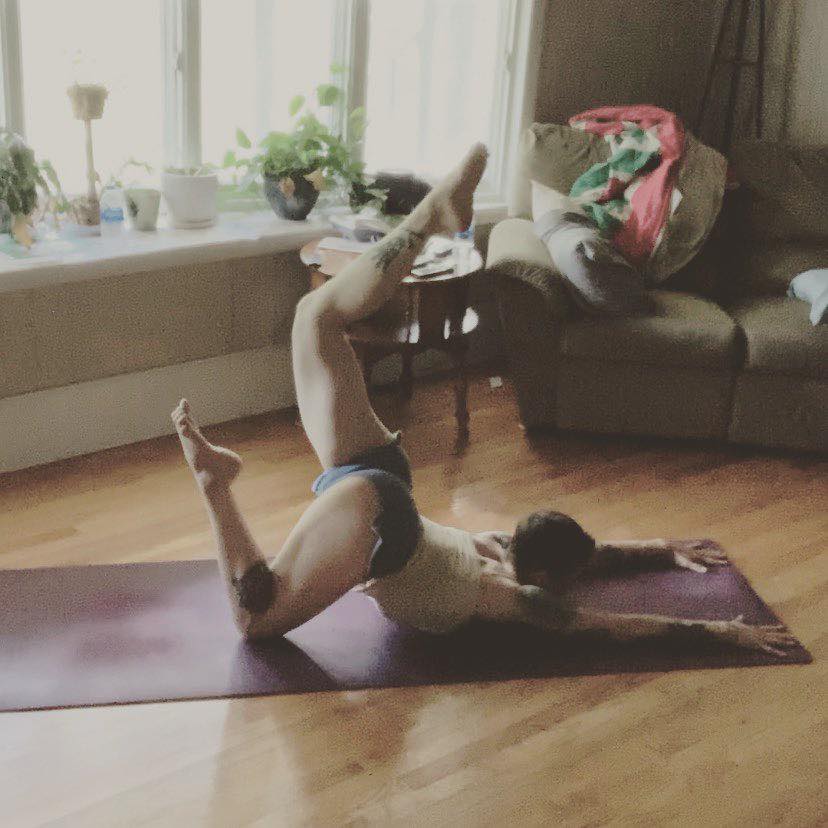
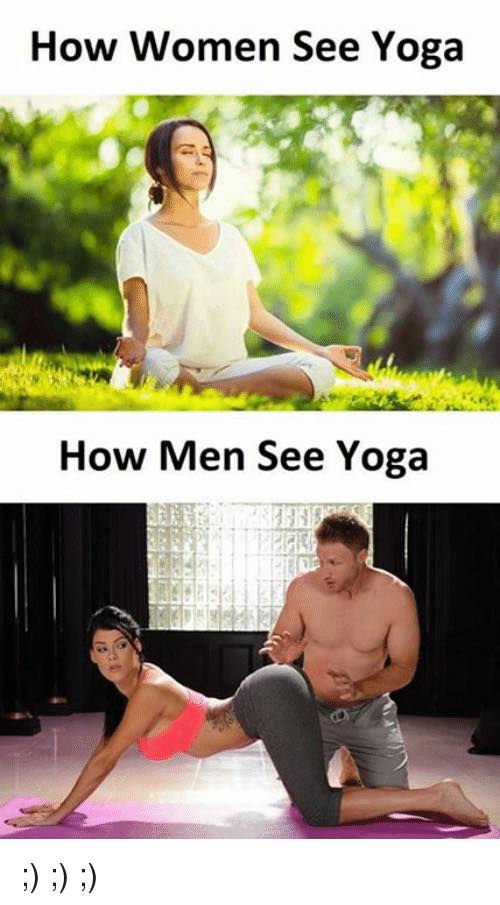
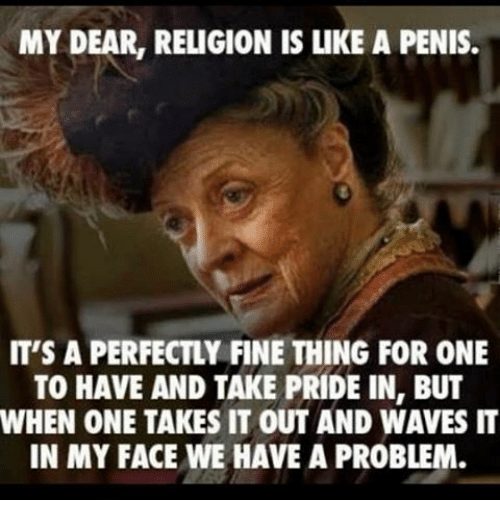
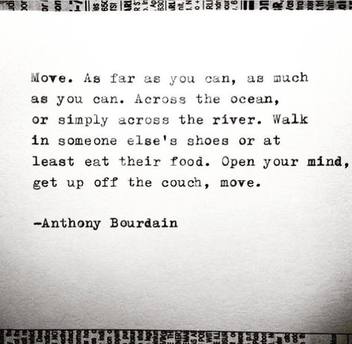
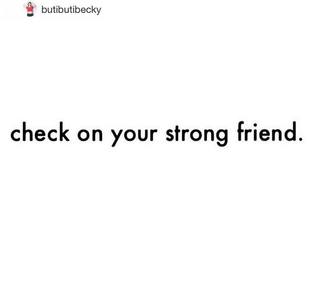

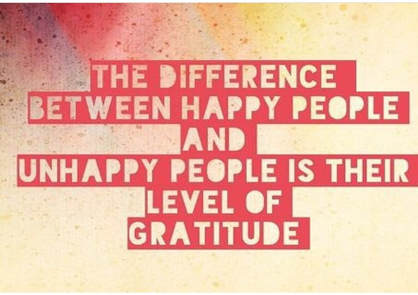
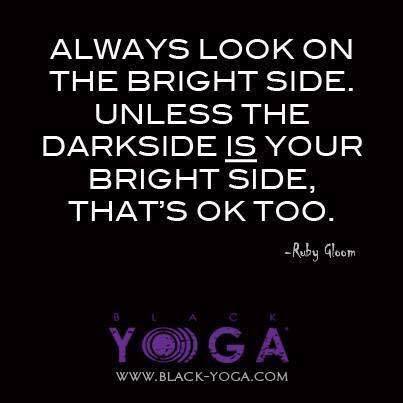


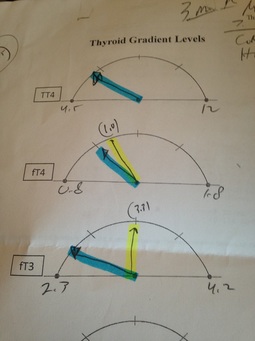
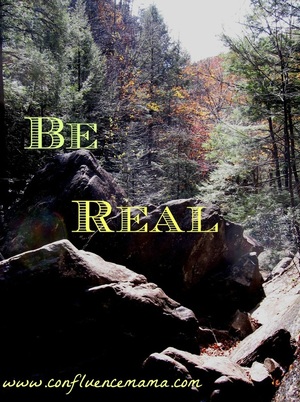



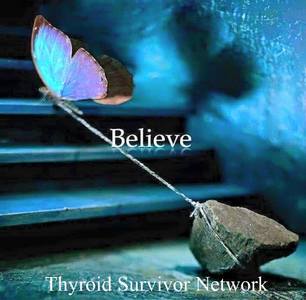

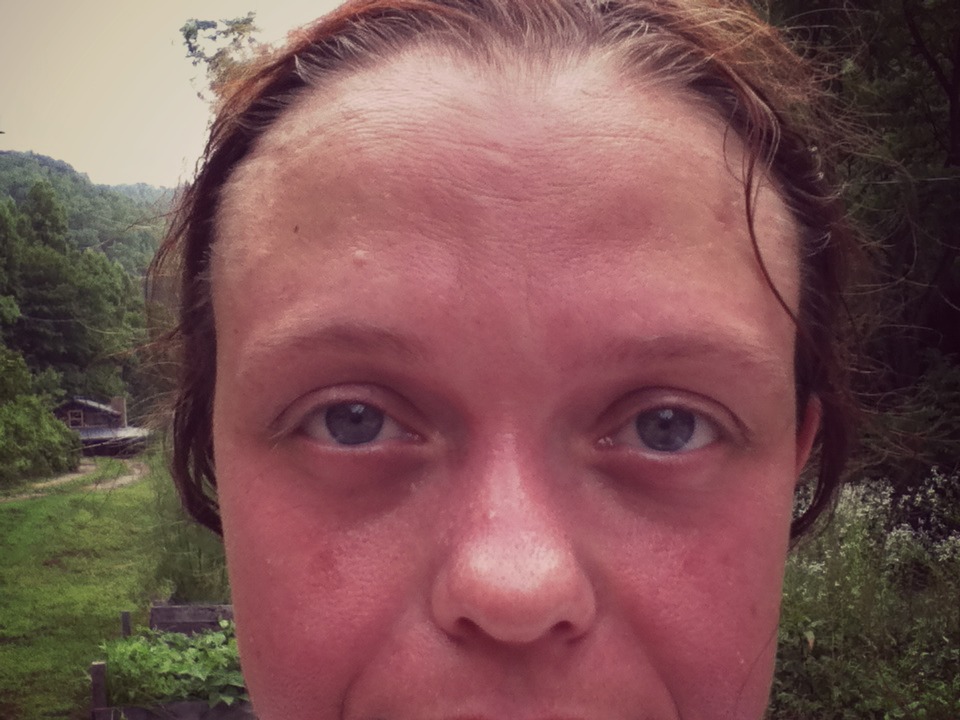
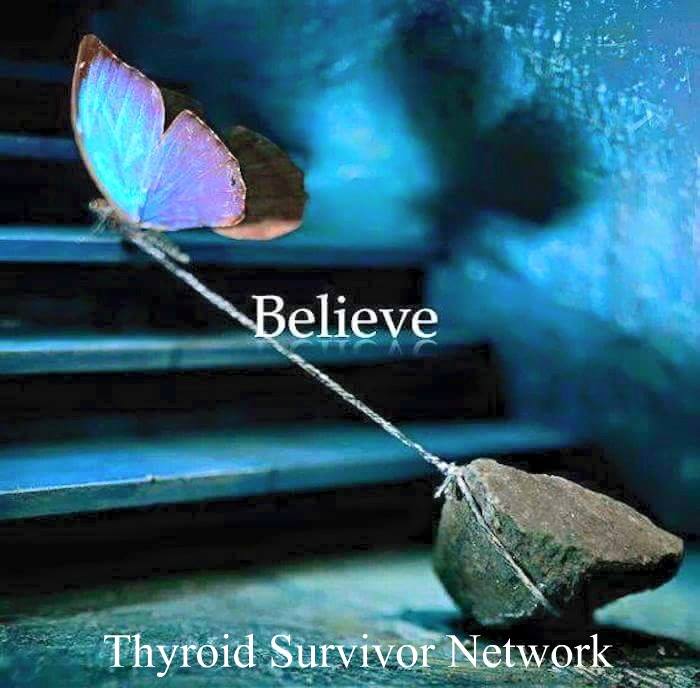
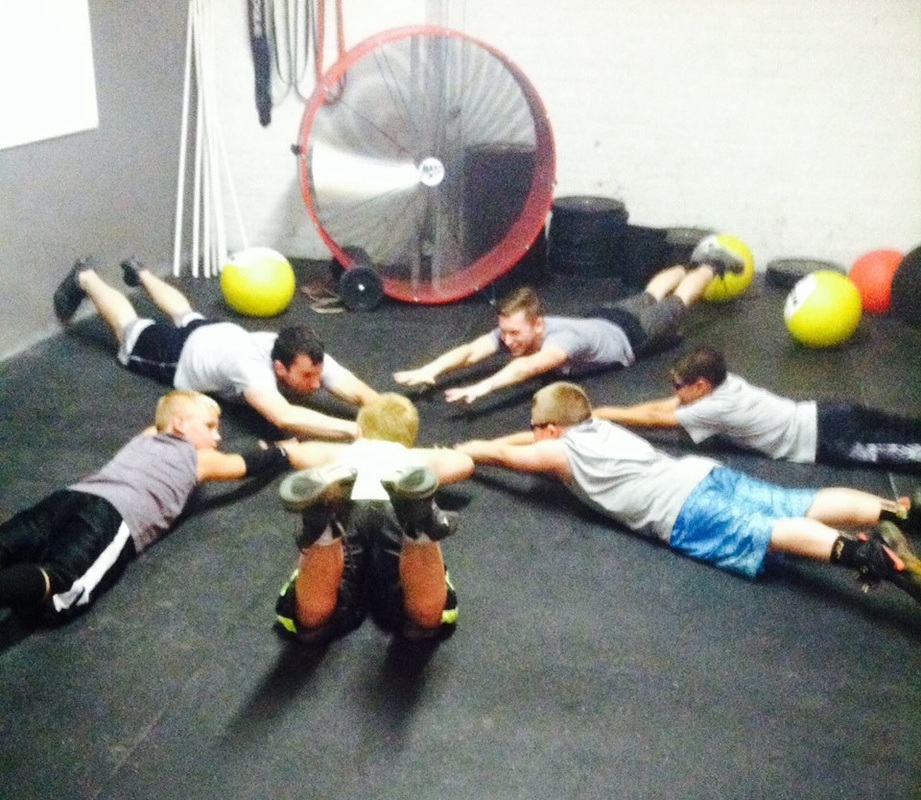



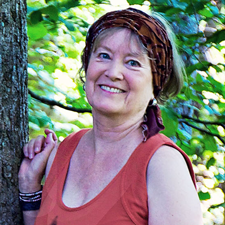
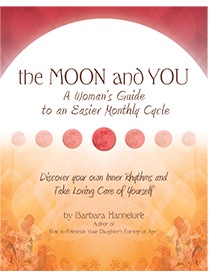
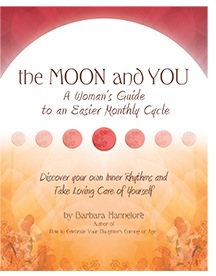
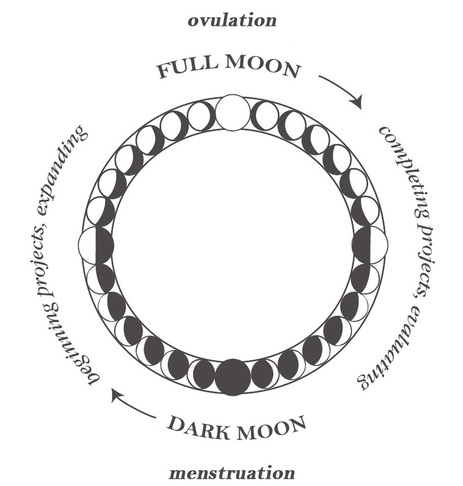
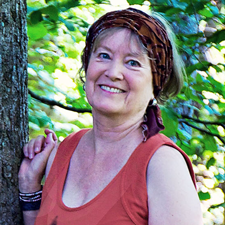

 RSS Feed
RSS Feed